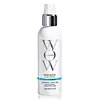What's inside
What's inside
 Key Ingredients
Key Ingredients

No key ingredients
 Benefits
Benefits

 Concerns
Concerns

 Ingredients Side-by-side
Ingredients Side-by-side

Water
Skin ConditioningC13-15 Alkane
SolventEthylhexyl Olivate
Skin ConditioningPolyacrylate-13
Glycerin
HumectantSqualane
EmollientBrassica Campestris/Aleurites Fordi Oil Copolymer
Skin ConditioningBeta Vulgaris Root Extract
Skin ConditioningArtocarpus Heterophyllus Fruit Extract
Skin ConditioningTocopherol
AntioxidantDimethicone
EmollientCetearyl Alcohol
EmollientArginine
MaskingPolysorbate 20
EmulsifyingSorbitan Isostearate
EmulsifyingEthylhexylglycerin
Skin ConditioningCaprylic/Capric Triglyceride
MaskingPolyisobutene
Lactobacillus Ferment
Skin ConditioningParfum
MaskingTrisodium Ethylenediamine Disuccinate
Phenoxyethanol
PreservativeCitric Acid
BufferingLimonene
PerfumingAlpha-Isomethyl Ionone
PerfumingGeraniol
PerfumingHydroxycitronellal
PerfumingLinalool
PerfumingCitronellol
PerfumingCinnamyl Alcohol
PerfumingWater, C13-15 Alkane, Ethylhexyl Olivate, Polyacrylate-13, Glycerin, Squalane, Brassica Campestris/Aleurites Fordi Oil Copolymer, Beta Vulgaris Root Extract, Artocarpus Heterophyllus Fruit Extract, Tocopherol, Dimethicone, Cetearyl Alcohol, Arginine, Polysorbate 20, Sorbitan Isostearate, Ethylhexylglycerin, Caprylic/Capric Triglyceride, Polyisobutene, Lactobacillus Ferment, Parfum, Trisodium Ethylenediamine Disuccinate, Phenoxyethanol, Citric Acid, Limonene, Alpha-Isomethyl Ionone, Geraniol, Hydroxycitronellal, Linalool, Citronellol, Cinnamyl Alcohol
Water
Skin ConditioningBehentrimonium Methosulfate
Cetearyl Alcohol
EmollientCocos Nucifera Oil
MaskingPolyquaternium-37
Dipropylene Glycol
HumectantPhenoxyethanol
PreservativePropylene Glycol Dicaprylate/Dicaprate
EmollientC10-40 Isoalkylamidopropylethyldimonium Ethosulfate
Silicone Quaternium-18
EmollientCaprylyl Glycol
EmollientCeteareth-20
CleansingPPG-26-Buteth-26
Skin ConditioningTrideceth-12
EmulsifyingPEG-40 Hydrogenated Castor Oil
EmulsifyingTrideceth-6
EmulsifyingPPG-1 Trideceth-6
Skin ConditioningHydrolyzed Keratin
HumectantParfum
MaskingLaurdimonium Hydroxypropyl Hydrolyzed Keratin
Skin ConditioningCoumarin
PerfumingQuaternium-33
Benzyl Alcohol
PerfumingPotassium Sorbate
PreservativeWater, Behentrimonium Methosulfate, Cetearyl Alcohol, Cocos Nucifera Oil, Polyquaternium-37, Dipropylene Glycol, Phenoxyethanol, Propylene Glycol Dicaprylate/Dicaprate, C10-40 Isoalkylamidopropylethyldimonium Ethosulfate, Silicone Quaternium-18, Caprylyl Glycol, Ceteareth-20, PPG-26-Buteth-26, Trideceth-12, PEG-40 Hydrogenated Castor Oil, Trideceth-6, PPG-1 Trideceth-6, Hydrolyzed Keratin, Parfum, Laurdimonium Hydroxypropyl Hydrolyzed Keratin, Coumarin, Quaternium-33, Benzyl Alcohol, Potassium Sorbate
 Reviews
Reviews

Ingredients Explained
These ingredients are found in both products.
Ingredients higher up in an ingredient list are typically present in a larger amount.
Cetearyl alcohol is a mixture of two fatty alcohols: cetyl alcohol and stearyl alcohol. It is mainly used as an emulsifier. Emulsifiers help prevent the separation of oils and products. Due to its composition, it can also be used to thicken a product or help create foam.
Cetearyl alcohol is an emollient. Emollients help soothe and hydrate the skin by trapping moisture.
Studies show Cetearyl alcohol is non-toxic and non-irritating. The FDA allows products labeled "alcohol-free" to have fatty alcohols.
This ingredient is usually derived from plant oils such as palm, vegetable, or coconut oils. There is debate on whether this ingredient will cause acne.
Due to the fatty acid base, this ingredient may not be Malassezia folliculitis safe.
Learn more about Cetearyl AlcoholParfum is a catch-all term for an ingredient or more that is used to give a scent to products.
Also called "fragrance", this ingredient can be a blend of hundreds of chemicals or plant oils. This means every product with "fragrance" or "parfum" in the ingredients list is a different mixture.
For instance, Habanolide is a proprietary trade name for a specific aroma chemical. When used as a fragrance ingredient in cosmetics, most aroma chemicals fall under the broad labeling category of “FRAGRANCE” or “PARFUM” according to EU and US regulations.
The term 'parfum' or 'fragrance' is not regulated in many countries. In many cases, it is up to the brand to define this term.
For instance, many brands choose to label themselves as "fragrance-free" because they are not using synthetic fragrances. However, their products may still contain ingredients such as essential oils that are considered a fragrance by INCI standards.
One example is Calendula flower extract. Calendula is an essential oil that still imparts a scent or 'fragrance'.
Depending on the blend, the ingredients in the mixture can cause allergies and sensitivities on the skin. Some ingredients that are known EU allergens include linalool and citronellol.
Parfum can also be used to mask or cover an unpleasant scent.
The bottom line is: not all fragrances/parfum/ingredients are created equally. If you are worried about fragrances, we recommend taking a closer look at an ingredient. And of course, we always recommend speaking with a professional.
Learn more about ParfumPhenoxyethanol is a preservative that has germicide, antimicrobial, and aromatic properties. Studies show that phenoxyethanol can prevent microbial growth. By itself, it has a scent that is similar to that of a rose.
It's often used in formulations along with Caprylyl Glycol to preserve the shelf life of products.
Water. It's the most common cosmetic ingredient of all. You'll usually see it at the top of ingredient lists, meaning that it makes up the largest part of the product.
So why is it so popular? Water most often acts as a solvent - this means that it helps dissolve other ingredients into the formulation.
You'll also recognize water as that liquid we all need to stay alive. If you see this, drink a glass of water. Stay hydrated!
Learn more about Water